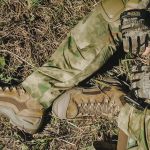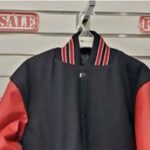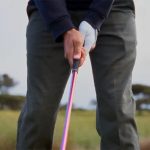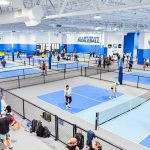The Finish Line, Inc. lived up to its reduced earnings guidance for the fiscal second quarter ended August 26 as net income was cut nearly in half by sluggish sales, the de-leveraging of occupancy costs, and increased costs associated with the launch of the Paiva retail concept for women and the general weakness of the urban/hip-hop business associated with the Man Alive stores the company acquired last year.
While a later back-to-school season can be blamed for some of the issues in the mall during the period, the retailer is placing most of the blame for their declining fortunes on the shifts in fashion trends, especially in the womens business, as well as increased promotional activity they attribute to a “lack of product differentiation in the marketplace.” Management also attributed some of the weakness in the kids business to the issues in womens, due in part to mom not shopping the stores, but also due to the fact that a portion of the kids sales are actually due to women buying kids sizes for less.
Alan Cohen, FINL chairman and CEO, said that the major fashion trend shifts in athletic footwear will “likely continue to negatively impact” their sales and financial performance for the remainder of the year.
Total company comparable store sales declined 6.6% for the quarter, with Finish Line comps decreasing 6.6% and Man Alive comps dipping 4.8% compared to Q2 last year.
At the Finish Line concept, the footwear business comped down 5.1% for the period, with the mens business posting “slightly negative” comps, but moved into positive territory in August, driven by a stronger mens casual business, which Cohen said continued to show “substantial comp store sales gains.” Mens running and basketball “performed below plan” for the quarter. The womens business saw a double-digit decline in Q2 and the kids business posted a high-singles decrease for the period, highlighted by a slowdown in Shox footwear in kids.
FINL pointed to continued energy from Puma, Converse, and Asics, as well as the addition of Skechers, Heelys, and other “lifestyle footwear,” as key growth drivers for Q2. But management also said that the strength in kids Retro Jordans, Heelys, Puma, and girls Skechers was not enough offset the kids Shox slowdown.
If there was any good news during Q2 it was the fact that the declines in comp sales moderated a great deal in the month of August as the footwear comp decline narrowed to less than one percent from the mid- to high-singles declines in the earlier part of the quarter. However, the same cant be said for the apparel business, which hovered in the negative mid-teens territory in the last two months of the quarter after posting a 12.1% comp sales decline in June. The declines come on top of a 2% comp store sales decline in Q2 last year which featured flat footwear comps in July and August. Average selling prices were flat in footwear for the quarter this year, which was seen as an improvement from the 3% decline seen in the first quarter.
Private label, which was the only growth category for apparel, continues to grow as a percentage of the total segment, accounting for almost 45% of apparel sales in Q2, while branded delivered 35% of sales and licensed contributed 20% to the total. FINL said the licensed jersey business remained very promotional in the second quarter and said they were “becoming concerned with the future status of what used to be a premium business.” Management said the softness in licensed jerseys was seen in both MLB and NFL and also signaled weakness in the headwear category.
Finish Line comps for September were said to be similar to August. Management said they continue to focus more on the fashion athletic business, but also said that they needed to see an improvement in basketball for total sales to improve.
FINL opened five new Finish Line stores in Q2 for a total of 19 stores for H1 and still see a total of 40 new stores for the year.
The Man Alive stores saw declines in both the mens and juniors apparel business, which comped against strong woven and novelty t-shirt trends from last year. The total Man Alive nameplate saw a 1.3% comp sales decline in August after posting comp declines in the 6% to 7% range in the earlier part of the quarter. Footwear posted double-digit sales growth in Q2.
FINL management said that the urban/hip-hop consumer that frequents the Man Alive concept are more susceptible to higher gas prices since the business is about 80% cash. Some of that may be improving as gas prices drop in September as comps start to comp positive in the high-singles month-to-date.
The retailer opened 11 new man Alive stores in Q2 for a total of 25 new doors in the first half. They expect to open a total of 35 new stores for the year, with most opening before the Holiday period.
The company opened two Paiva stores in the second quarter for a total of six for the year so far. They expect to open nine more stores by fiscal year-end.
The direct-to-consumer business, which has been a key revenue driver each quarter, was flat for the most recent period.
Inventory on a per square foot basis was up 6% at quarter-end.
| The Finish Line | |||
| Second Quarter Results | |||
| (in $ millions) | 2006 | 2005 | Change |
| Total Sales | $338.6 | $341.6 | -0.9% |
| GM % | 30.1% | 32.5% | -250 bps |
| SG&A % | 25.4% | 23.8% | +150 bps |
| Net Income | $9.9 | $18.9 | -47.5% |
| Diluted EPS | 21¢ | 38¢ | -44.7% |
| Comps Change | -6.6% | -1.9% | |
| Inventory* | $322.7 | $280.0 | +15.3% |
| *at quarter-end | |||














